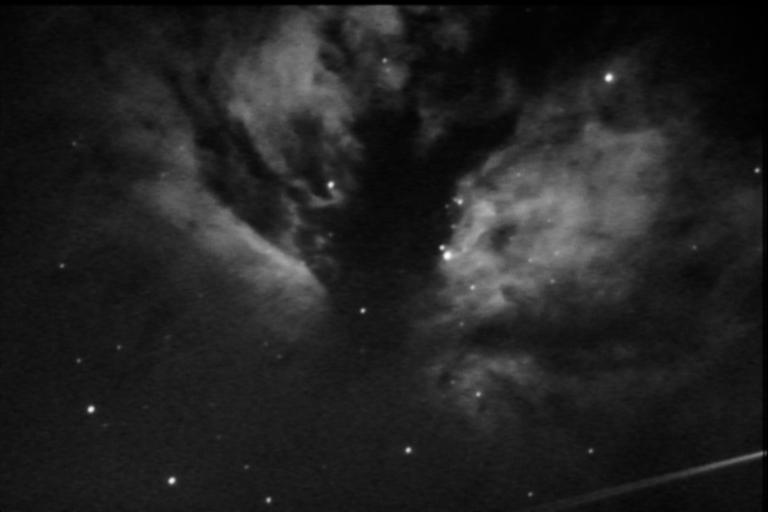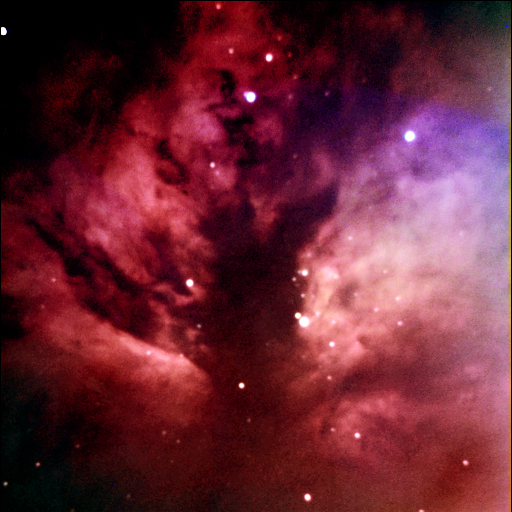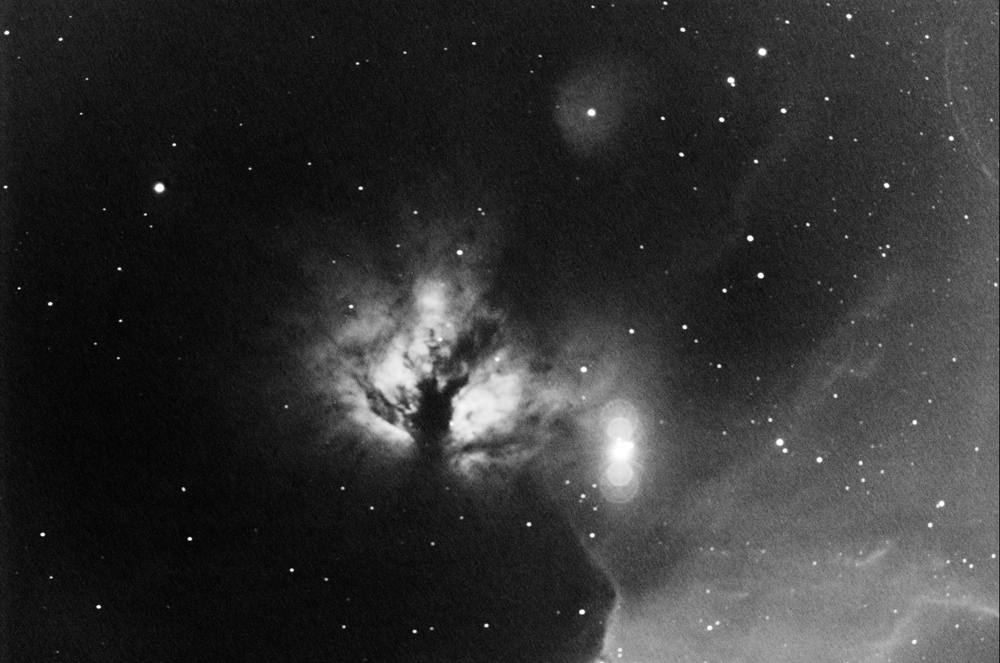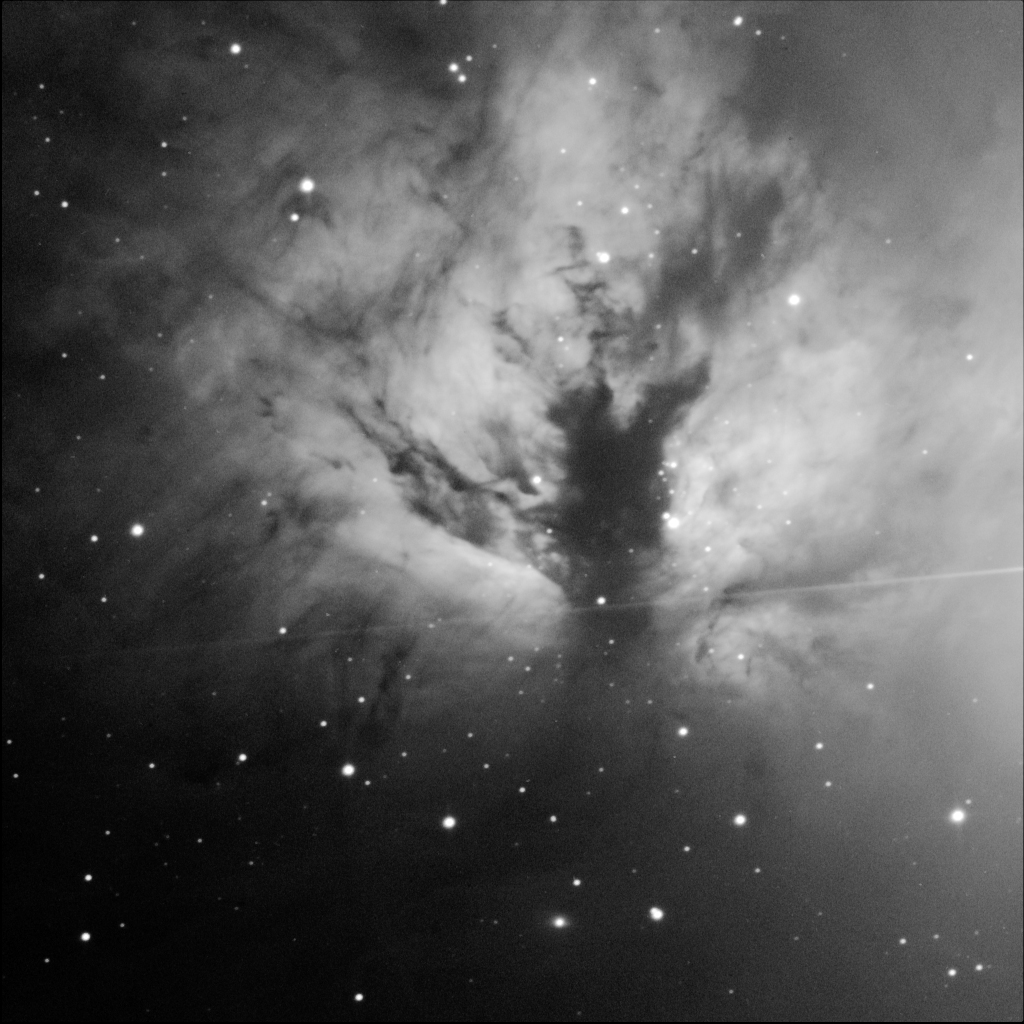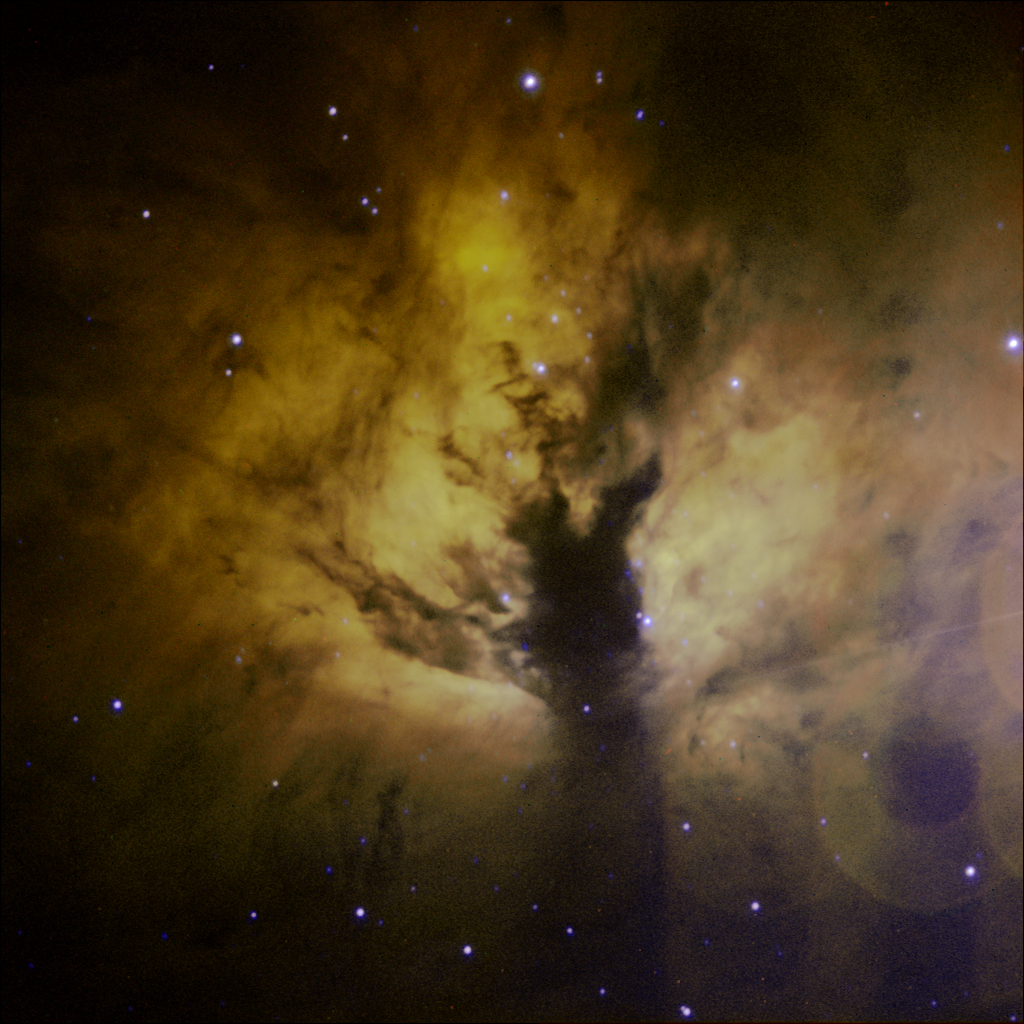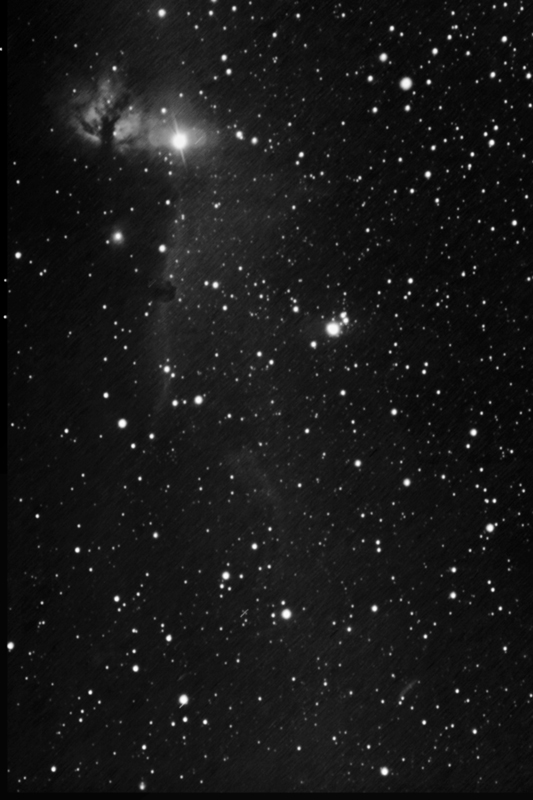
Combination of 5, 3 minute exposures using an H-alpha filter.
SBIG ST-8XE CCD. 300mm f/4 Tamron lens.

Almost the entire constellation of Orion is shrouded in nebulosity. Much of this nebulosity is invisible to visual observers, except as patches of sky with fewer than normal numbers of stars. However in some locations there are stars close enough to the nebulosity to cause them to glow. The most obovious such location is M42, the Great Orion Nebula. Another is M 78.
Almost half way between these two is NGC 2024, also known as the Flame Nebula. Although this is a reasonably bright object, it can be difficult to discern due to the very close proximity of zeta orionis (Alnitak, the very bright star in the above image). Using moderate magnification makes it much easier to keep the bright star out of the field of view. Then the nebula is easily visible in a 4" telescope.
